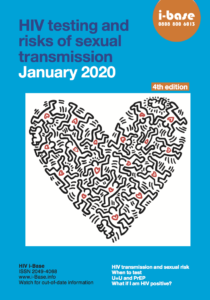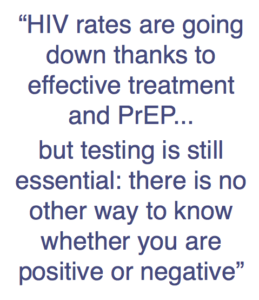Introduction
 Over the last few years, HIV rates in the UK and many other countries have started to drop.
Over the last few years, HIV rates in the UK and many other countries have started to drop.
This is because of a combination of reasons.
- More frequent HIV testing.
- Earlier diagnoses.
- Starting HIV treatment (ART) earlier.
- Better HIV drugs that are easier to take and reduce viral load more quickly.
- Wider use of PrEP.
But knowing how to protect your sexual health is still very important – whether you are HIV positive or HIV negative.
This guide is about sexual transmission of HIV and HIV testing.

It includes information on:
- How HIV risk is more than just about condoms.
- How and when different HIV tests can be used.
- What test results mean, especially in relation to the time since your last potential risk.
- The importance of making your own decisions about your sexual health.
This guide is written for people who want to have sex.
This booklet is focused on different risks for transmission and on ways to stay HIV negative.
But sex is complicated. Even when being careful, some people will still become HIV positive.
If this happens, there is little to gain from looking back. ART is very effective.
If you are HIV positive, i-Base and other organisations can help.
Changes to the 5th edition
- The main change to this edition is the UK recommendation to wait for six weeks before testing. This is based on new UK guidelines in 2020.
- There is also wider confidence that ART stops HIV, even if you don’t use condoms. Most HIV positive people are now diagnosed and are on ART.
- PrEP is also more widely used to protect against HIV. In the UK, PrEP is now available free on the NHS.
- PrEP is when an HIV negative person uses HIV drugs to prevent infection. When used correctly PrEP reduces the risk of transmission by more than 99%.
Last updated: 1 June 2021.
